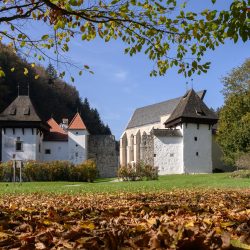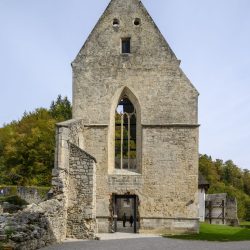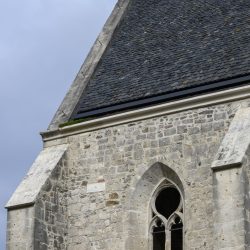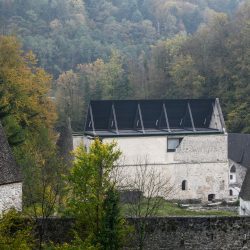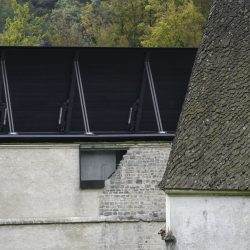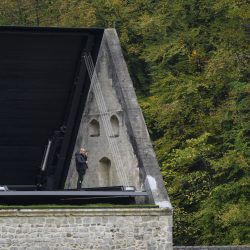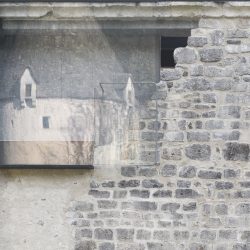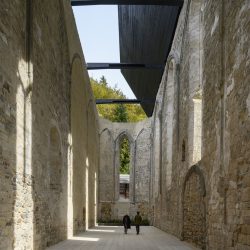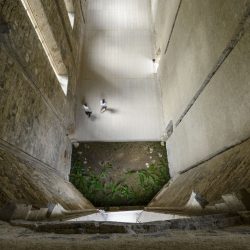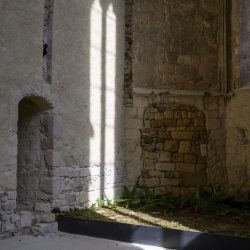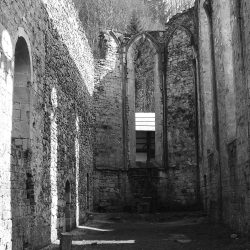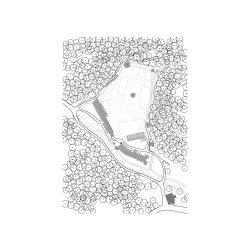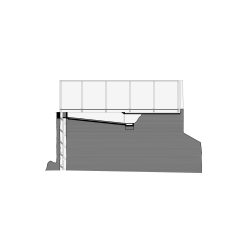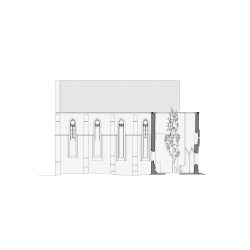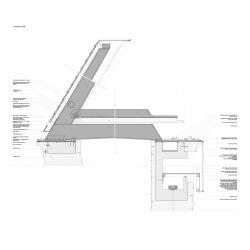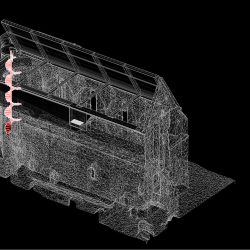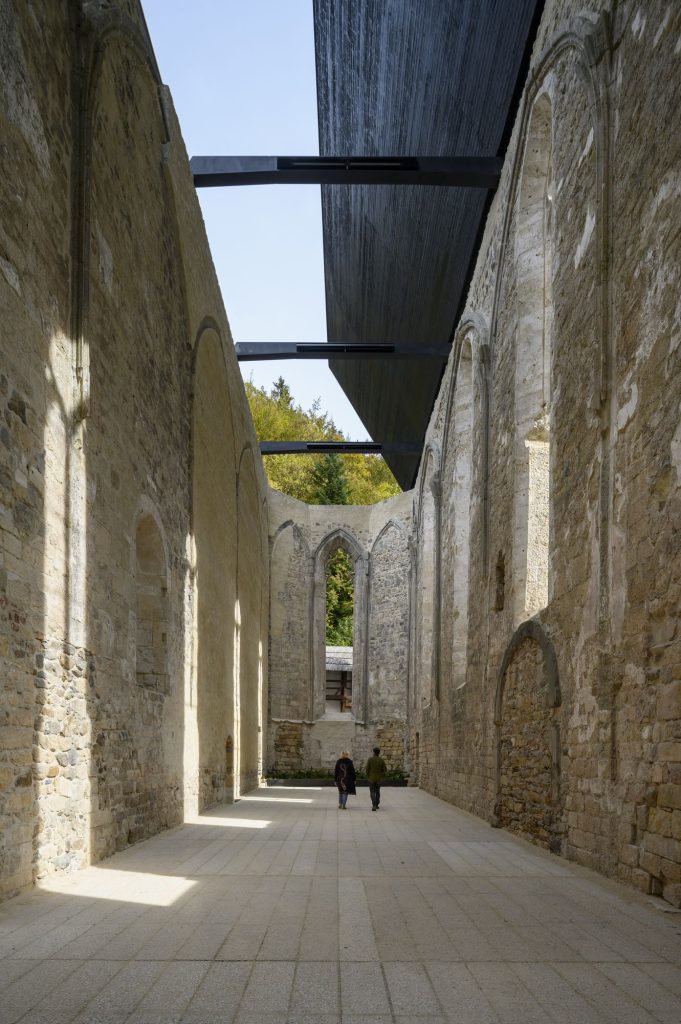
At the end of the valley since 12th century stands the former upper monastery of the Žiče Charterhouse. It is a conceptually thought-out solution, which resolves in several key points the half a century old dilemma concerning the acceptability of interventions in historic building material and the question of how to protect it.
With this architectural solution, the church again becomes a coherent spatial dominant with its original dimension recreated, while the floating monolith forms both a physical and symbolic turning point between past interventions and the doctrine of modern cultural heritage protection – the space between a ruin and a reconstruction. Through the open, movable roof, the intangible value of the collective memory of the last two hundred years when the church was a ruin is also aptly expressed through the view that rises above the stone walls towards the sky. The architectural intervention re-establishes the historical communication of two spiral staircases, which once led to the upper floors. The two staircases are connected with a new lookout point situated within the gap between the original and secondary north wall.
Beside the protection of the remains, the central question of the renovation was how to preserve the specific relationship between the ruins (as ruins) and their unique immaterial effects, despite the new interventions.
The renovation had to comply with contemporary technical, programming and conservation requirements. The construction and restoration interventions in the existing walls were carried out in such a way that they enable a chronological reading of the nine-hundred-year-old sacral space. As part of the renovation, the reconstruction of the demolished part of the northern wall of the church was completed. The largest intervention was the covering of the existing building substance of the church with a semi-movable folding roof. A merged solution, the movable folding roof allows two extremes at the same time: when lowered, it enables smooth running of events in the church, regardless of the season and weather, while when raised, it preserves one of the most important intangible moments of the ruins – contact with the open sky. For access to the top of the remains or in the “loft” of the new roof, new suspended spiral staircases were designed in the existing vertical shafts of the former spiral staircases.
The biggest attraction of the renovation is the movable folding roof, which occupies a special place of significance within the project. It is a rough high-tech facility, a literally real technological “machine”, which acts as a specific architectural tool, intended to preserve a distinctly non-technological, practically immaterial effect – the open sky above the main church nave. The extremely pragmatic and modern solution is also intended to preserve the subtle ambience with an open sky, what is particularly interesting about this extremely material, technical-mechanical solution of the architectural project. The high-tech modern solution in the renovation project does not appear as an apotheosis of the achievements of modern construction, but – on the contrary – enables an intense phenomenological experience of the immaterial qualities of the remains of the former monastery, while at the same time protecting them from further deterioration. Perhaps precisely because of this, the project’s guiding principle could be described as a search for an intersection between the “matter of the immaterial” on the one hand and the “immaterial matter” on the other.
_
Covering the remains of the church of St. John the Baptist in the Žiče Charterhouse
Authors: MEDPROSTOR
Rok Žnidaršič, Jerneja Fischer Knap, Katja Ivić, Samo Mlakar, Dino Mujić
Chief conservator: ZVKDS OE Celje, Matija Plevnik
Client: Municipality of Slovenske Konice
Photos: Miran Kambič, Tadej Bolta
Location: Stare Slemene, Žička kartuzija, Slovenia
Project date: 2020-2022
Completition date: 2022
Built-up area: cca 355 m2
Designers and engineers:
– Structural Engineering: Proming, d.o.o., Tomaž Klančnik, Andrej Hribar;
Hiša Niša, d.o.o., mag. Tomaž Habič
UL FGG, prof.dr. Vlatko Bosiljkov,
– Electrical Engineering: Enerko biro, d.o.o., Ivan Stepišnik
– Folding roof design: Janez Mrše Jaka
– Electric motor roof lift system: Maori d.o.o., Marsel Osmanagić, Klemen Špehar
Contractors, suppliers:
The main contractor of construction and crafts works: Gradnje Marguč d.o.o.
The main contractor of restoration and conservation works: Gnom d.o.o.
Tombstone replica: Gnom, d.o.o.
Bell: Janez Moškrič, s.p.
Alyssum montanum subsp. pluscanescens – planting: Botanični vrt UL, Jože Bavcon, Blanka Ravnjak
Steel structure and equipment: Kostroj – strojegradnja, d.o.o.
Roof lift system: Maori d.o.o.
Wooden construction: Huba hiše d.o.o.; Streha SOS d.o.o.
Roofing metalwork: Borovnik d.o.o.
Slate covering: Jože Podgrajšek, s.p.
Paving: GP KB, d.o.o.
Lighting and audio equipment: Maori d.o.o.; MK light sound d.o.o., Razkošje svetlobe, d.o.o., Strle svetila d.o.o.

